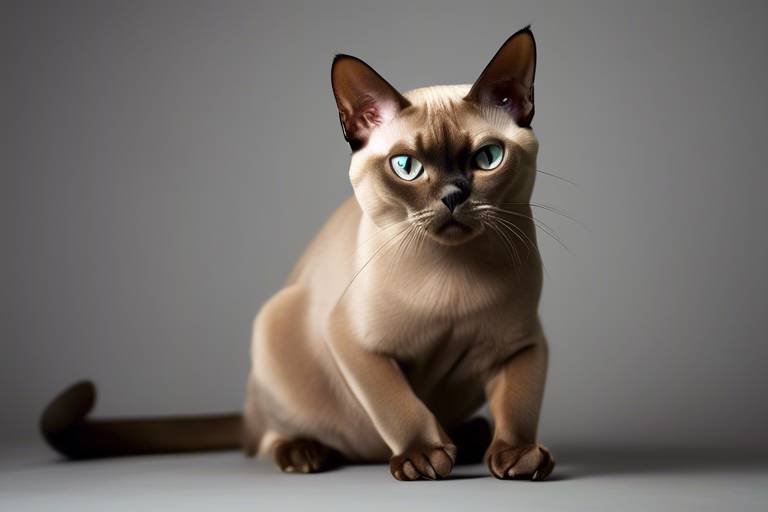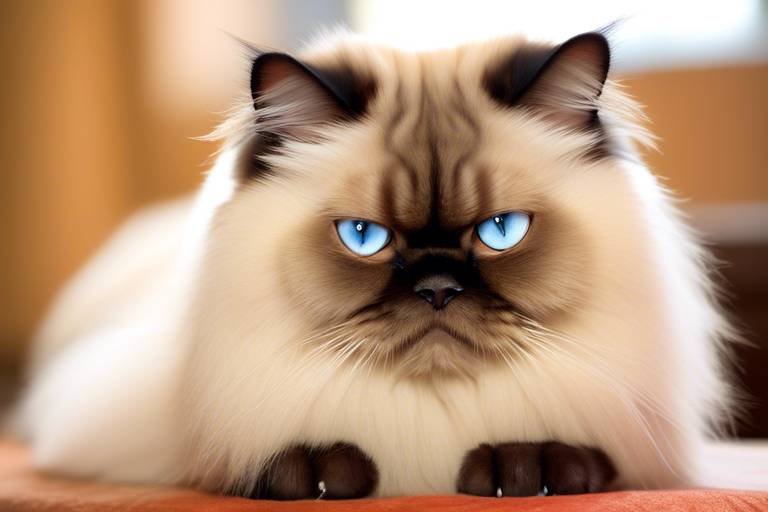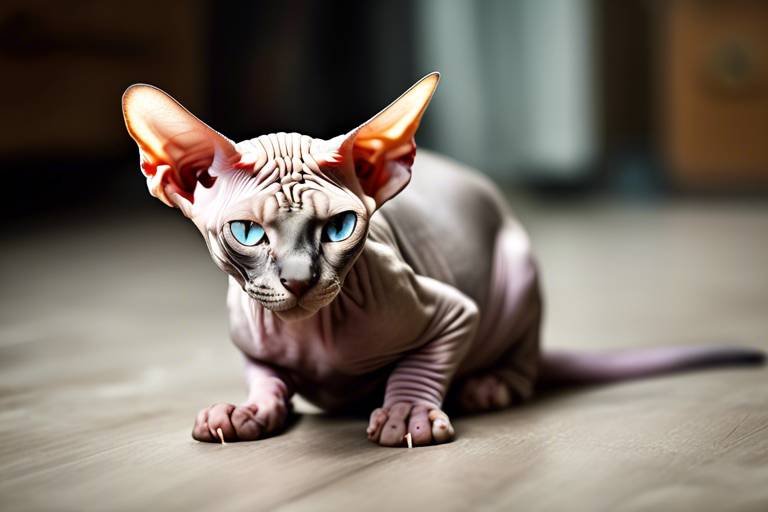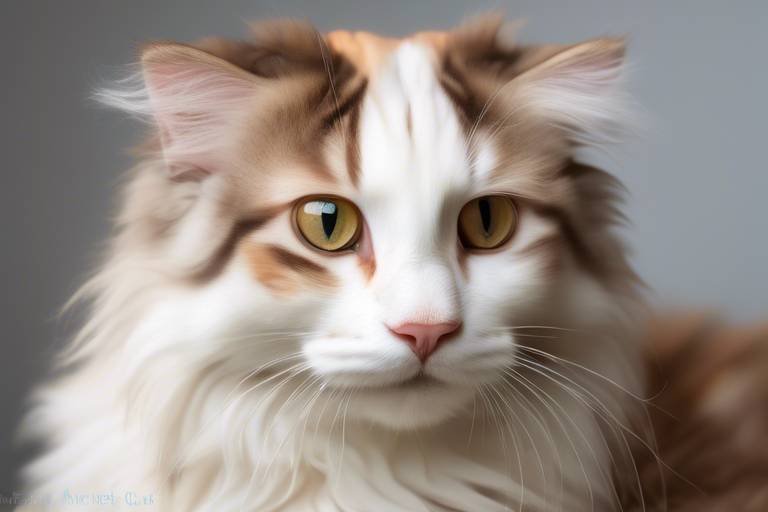Understanding the Personality of the Norwegian Forest Cat
The Norwegian Forest Cat is more than just a pretty face; it's a bundle of personality traits that make them truly unique. If you’re considering adding one of these majestic felines to your family, it’s essential to understand what makes them tick. Known for their playful nature and affectionate demeanor, these cats are both enchanting and complex. Imagine having a furry companion who is not only intelligent but also has a knack for bringing joy and laughter into your home. They have a way of stealing hearts with their charming quirks and loving personalities.
One of the most striking aspects of the Norwegian Forest Cat's personality is their curiosity. These cats are natural explorers, always eager to investigate their surroundings. Whether it’s a rustling leaf outside or a new toy in the living room, their inquisitive nature keeps them engaged and entertained. This curiosity often translates into a playful spirit that thrives on interaction and stimulation. They enjoy a good game of chase, whether it’s with a feather toy or even a laser pointer, showcasing their agility and energy.
Socially, Norwegian Forest Cats are known to be quite affectionate with their human companions. They form strong bonds and often follow their owners around the house, seeking companionship and attention. Unlike some cats that prefer solitude, these furry friends thrive on social interaction. They are known to be gentle giants, making them suitable for families with children or other pets. Their calm demeanor and playful nature allow them to coexist harmoniously with various family members, making them the perfect addition to any household.
However, it's not all sunshine and rainbows; understanding their temperament is crucial. Norwegian Forest Cats can be quite independent, often enjoying their alone time, especially if they have a cozy spot to curl up in. This independence can sometimes be misinterpreted as aloofness, but it's simply part of their personality. They appreciate having a space where they can retreat and recharge. It's a bit like having a friend who loves to hang out, but also enjoys their quiet time. Balancing interaction with their need for independence is key to a happy relationship.
In terms of communication, these cats are not shy about expressing their feelings. They have a variety of vocalizations, from gentle purring when content to more assertive meows when they want attention or food. It’s almost as if they have their own language, and as a cat owner, you’ll soon learn to interpret their sounds and behaviors. Paying attention to their cues can help you understand what they need, whether it’s playtime or a bit of solitude.
Overall, the personality of the Norwegian Forest Cat is a delightful mix of playfulness, affection, and a touch of independence. They are intelligent, social creatures that thrive in a loving environment. If you’re ready to welcome a Norwegian Forest Cat into your life, be prepared for a rewarding journey filled with companionship, laughter, and the occasional surprise. These cats have a way of making every day an adventure, and their unique personalities will undoubtedly enrich your life.
- What are the key personality traits of a Norwegian Forest Cat? They are playful, affectionate, curious, and independent.
- Do they get along well with children and other pets? Yes, they are known to be gentle and sociable, making them great family pets.
- How much playtime do they need? Regular play is essential to keep them mentally and physically stimulated.
- Are they vocal cats? Yes, they tend to communicate their needs through various vocalizations.
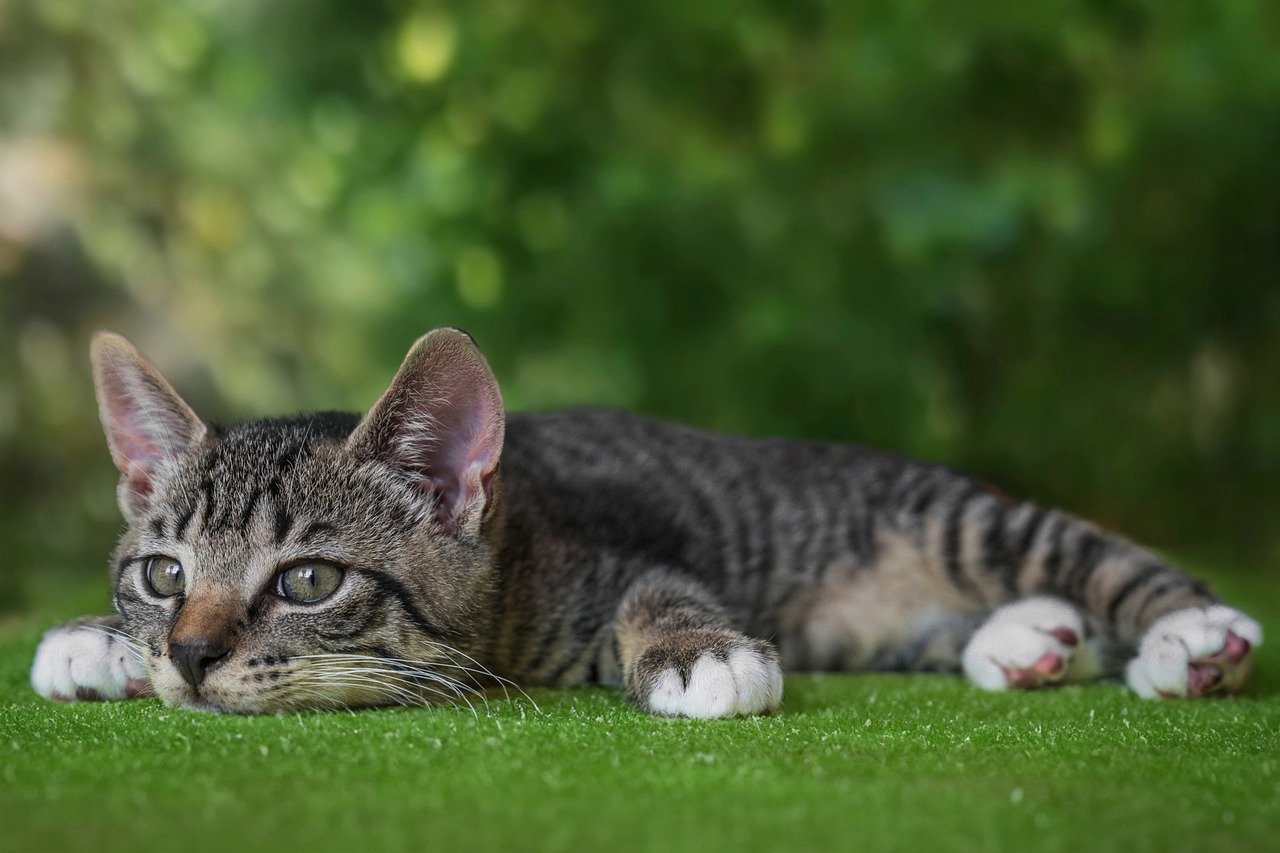
Origins and History
The Norwegian Forest Cat, often affectionately referred to as the "Wegie," boasts a rich and captivating history that dates back to ancient Norway. These magnificent felines are believed to have descended from a mix of domestic cats brought to Norway by the Vikings and larger wildcats native to the region. Imagine a time when these cats roamed the rugged landscapes of Norway, their thick fur protecting them from the harsh, cold climate. They were not just pets; they were skilled hunters, adept at catching rodents and other small prey, which made them invaluable to the farmers of the time.
As the story goes, the Norwegian Forest Cat played a significant role in Norse mythology, often associated with the goddess Freyja, who was said to ride in a chariot pulled by large cats. This connection to mythology only adds to their allure, making them not just a breed but a symbol of strength and grace. Over the centuries, these cats became cherished companions, known for their friendly demeanor and playful spirit. They thrived in the Scandinavian landscape, adapting to the cold with their robust build and luxurious double coat.
In the early 20th century, the breed faced challenges due to the advent of World War II, which led to a significant decline in their population. However, dedicated breeders worked tirelessly to revive the breed, and by the 1970s, the Norwegian Forest Cat was officially recognized by various cat registries. Today, they are celebrated not only for their stunning appearance but also for their unique personality traits, making them a favorite among cat enthusiasts worldwide.
To give you a clearer picture of their historical significance, here’s a brief timeline:
| Year | Event |
|---|---|
| Viking Era | Domestic cats introduced to Norway. |
| Mythological References | Association with Norse goddess Freyja. |
| 20th Century | Population decline due to WWII. |
| 1970s | Official recognition of the breed. |
In conclusion, the Norwegian Forest Cat is not just a breed with a fascinating history; it is a testament to resilience and adaptability. Their journey from the rugged terrains of Norway to beloved household companions is a story worth sharing. As you consider welcoming one of these charming cats into your home, you'll be embracing a piece of history, along with a personality that is sure to bring joy and companionship to your life.
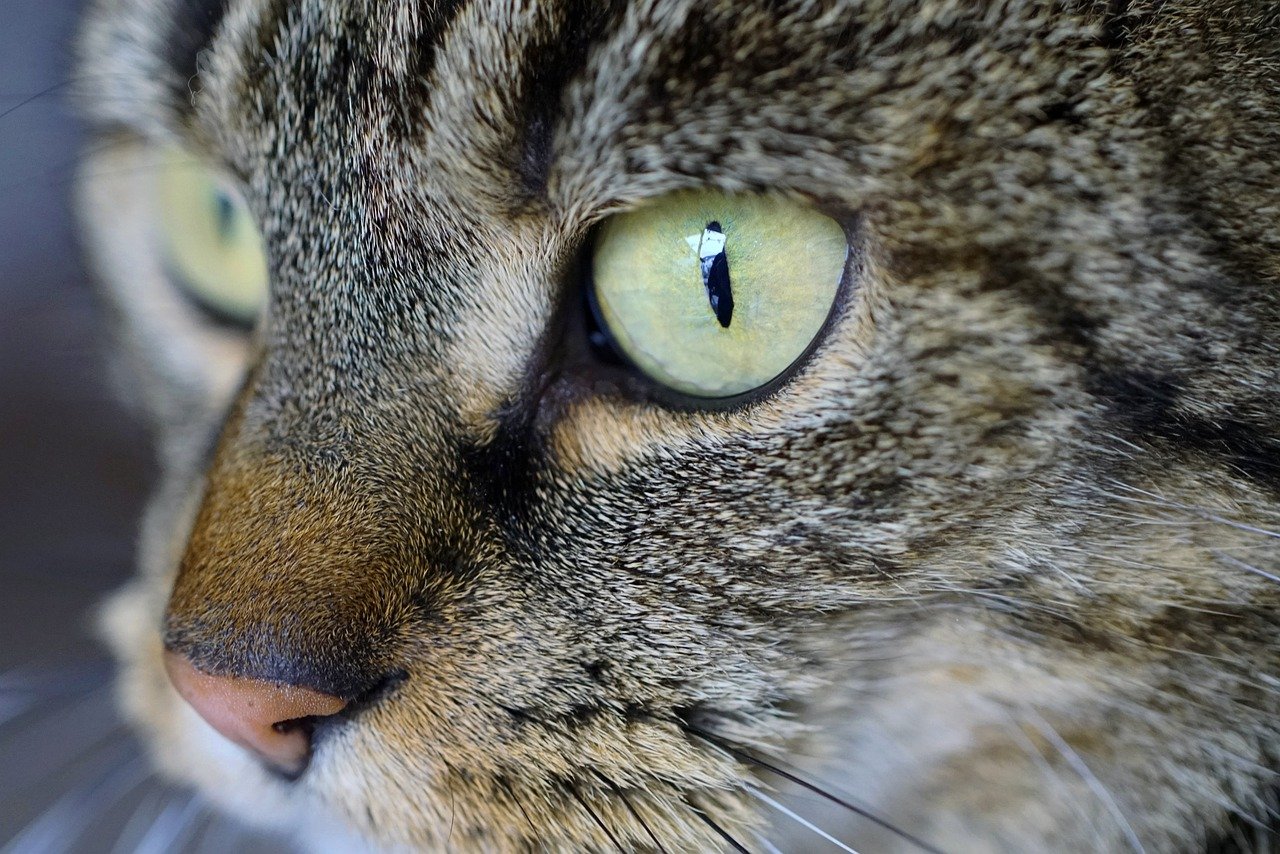
Physical Characteristics
The Norwegian Forest Cat is a stunning breed that captivates cat lovers with its unique physical traits. These majestic felines boast a sturdy and muscular build, which not only adds to their charm but also reflects their history as skilled hunters in the rugged landscapes of Norway. With a robust body, they typically weigh between 9 to 16 pounds, making them one of the larger domestic cat breeds. Their strong legs and large paws are perfectly adapted to navigate snowy terrains, allowing them to thrive in their native environment.
One of the most striking features of the Norwegian Forest Cat is its luxurious coat. This breed possesses a double-layered fur that is both thick and water-resistant, providing insulation against harsh weather conditions. The outer layer consists of long, coarse guard hairs, while the undercoat is soft and dense, offering warmth and protection. This combination not only keeps them cozy in the cold but also contributes to their overall majestic appearance. The coat comes in a variety of colors and patterns, from classic tabby to solid hues, making each cat uniquely beautiful.
In addition to their impressive coat, Norwegian Forest Cats have distinct features that set them apart. Their triangular-shaped head is complemented by large, tufted ears that give them an alert and expressive look. Their eyes are another captivating feature, often almond-shaped and ranging in color from green to gold, which adds to their enchanting aura. The bushy tail, which can be as long as their body, is not only a striking characteristic but also serves as a means of balance and warmth during colder months.
Grooming a Norwegian Forest Cat is essential to maintain their beautiful coat. Regular brushing is recommended, ideally two to three times a week, to prevent matting and to keep their fur healthy and vibrant. During shedding seasons, which typically occur in spring and fall, more frequent grooming is necessary to manage the increased amount of fur. In addition to brushing, it’s important to check their ears and trim their nails regularly, ensuring they remain comfortable and healthy.
Understanding the seasonal shedding patterns of Norwegian Forest Cats is crucial for any owner. As the weather warms up in spring, these cats shed their thick winter coat to prepare for the warmer months. Conversely, they will grow a denser coat in the fall to protect them from the impending cold. To manage this shedding, a good vacuum cleaner and lint rollers can be your best friends!
While Norwegian Forest Cats are generally good at grooming themselves, occasional baths can be beneficial, especially if they get into something messy. However, it's important to note that frequent bathing can strip their coat of natural oils, leading to dryness. Aim for a bath every few months or as needed. Always use a gentle cat shampoo and ensure they are thoroughly dried afterward to keep their coat in top condition.
Coat and Grooming
The Norwegian Forest Cat is not just a pretty face; their luxurious coat is one of their most striking features, and it plays a crucial role in their overall health and well-being. This breed boasts a thick, water-repellent double coat that keeps them warm in harsh climates, making them perfectly adapted to their native Norway. However, this beautiful fur requires regular grooming to maintain its luster and prevent matting. Think of grooming as a way to not only keep your cat looking fabulous but also as a bonding experience that strengthens your relationship.
When it comes to grooming, consistency is key. Ideally, you should aim to brush your Norwegian Forest Cat at least once a week. This not only helps in removing loose hair and preventing tangles but also reduces the amount of fur that ends up on your furniture and clothes. During shedding seasons—typically in spring and fall—you may need to increase the frequency to every few days. This is when they shed their winter coat, and you'll likely find yourself in a furry battle with the amount of hair flying around your home!
To make grooming a pleasant experience for both you and your feline friend, consider the following tips:
- Use the Right Tools: Invest in a good-quality slicker brush and a comb designed for long-haired cats. These tools will help you tackle tangles and keep the coat smooth.
- Start Slowly: If your cat isn’t used to being groomed, start with short sessions and gradually increase the time as they become more comfortable.
- Be Gentle: Always be gentle when brushing, especially around sensitive areas like the belly and underarms.
It's also essential to keep an eye on their ear and eye health. Norwegian Forest Cats can be prone to ear infections and tear staining. Regularly check their ears for dirt or wax buildup and wipe their eyes with a damp cloth if you notice any discharge. This simple step can prevent more significant health issues down the road.
While grooming is vital, bathing should be approached with caution. Unlike some breeds that require regular baths, Norwegian Forest Cats are generally good at keeping themselves clean. Frequent bathing can strip their coat of essential oils, leading to dryness and irritation. If you feel a bath is necessary—perhaps due to a particularly messy encounter or if they’ve rolled in something unsightly—use a cat-friendly shampoo and ensure you rinse thoroughly. Aim for a bath no more than a few times a year.
In summary, grooming your Norwegian Forest Cat is a rewarding part of cat ownership. It not only helps maintain their stunning appearance but also fosters a deeper connection between you and your furry companion. With a little patience and the right techniques, grooming can become a delightful ritual that both you and your cat look forward to!
Seasonal Shedding
The Norwegian Forest Cat is known for its stunning, thick coat, which not only adds to its majestic appearance but also serves as protection against harsh weather conditions. However, with such a luxurious fur coat comes the inevitable reality of seasonal shedding. As the seasons change, particularly in spring and fall, these cats undergo a natural process of shedding their fur to adapt to the fluctuating temperatures. This shedding can be quite pronounced, leading to tufts of fur scattered throughout your home. So, how can you manage this furry phenomenon without losing your mind?
During the shedding seasons, it's essential to ramp up your grooming routine. Regular brushing not only helps to remove loose fur but also minimizes matting and keeps your cat's coat looking vibrant and healthy. Ideally, you should aim to brush your Norwegian Forest Cat at least a few times a week during these periods. This not only helps to control the amount of fur floating around your home but also offers a bonding experience between you and your feline friend.
Here are some tips to effectively manage seasonal shedding:
- Choose the Right Brush: Invest in a high-quality grooming tool designed for long-haired cats. A slicker brush or a wide-toothed comb can work wonders in removing loose fur.
- Establish a Routine: Set aside time each week for grooming sessions. Consistency is key, and your cat will become accustomed to the process.
- Maintain a Healthy Diet: A balanced diet rich in omega fatty acids can promote a healthier coat, reducing excessive shedding.
Additionally, keep an eye on your cat's environment. High temperatures and humidity can exacerbate shedding, so ensure your home is comfortable. Regularly vacuuming and using lint rollers can help keep the fur under control, ensuring that your home remains a clean and welcoming space.
In conclusion, while seasonal shedding is a natural part of life for the Norwegian Forest Cat, it doesn’t have to be a hassle. By staying proactive with grooming and maintaining a clean environment, you can enjoy the beauty of your furry companion without the constant battle against fur. Remember, a little effort goes a long way in keeping both your cat and your home happy and healthy!
- How often do Norwegian Forest Cats shed? They typically shed more during spring and fall, but regular grooming can help manage this.
- What type of brush should I use for my Norwegian Forest Cat? A slicker brush or wide-toothed comb is recommended for their thick fur.
- Can diet affect shedding? Yes, a balanced diet rich in omega fatty acids can promote a healthier coat and reduce shedding.
Bathing and Care
When it comes to the Norwegian Forest Cat, bathing and care might seem like a daunting task, but with the right approach, it can be a pleasant experience for both you and your feline friend. These majestic cats have a thick, water-repellent coat that is designed to keep them warm and dry in harsh climates. This unique feature means that they don’t require frequent baths like some other breeds. In fact, over-bathing can strip their coat of essential oils, leading to dryness and discomfort.
So, how often should you bathe your Norwegian Forest Cat? Generally, a bath every few months is sufficient, unless they get into something particularly messy. When you do decide to give them a bath, here are some steps to follow:
- Prepare the Area: Choose a warm, quiet space where your cat feels safe. A bathtub or sink works well.
- Gather Supplies: Have your cat shampoo (specifically formulated for cats), towels, and a non-slip mat ready.
- Brush Before Bathing: A good brushing will remove loose fur and help prevent matting.
During the bathing process, it’s crucial to keep the experience as stress-free as possible. Use lukewarm water and gently wet your cat's coat, avoiding their head. Apply the shampoo, lather it up, and rinse thoroughly. After the bath, wrap your cat in a towel to absorb excess water and keep them warm. Remember, patience is key! Some cats may not enjoy the experience, so a calm demeanor from you can help ease their anxiety.
Aside from bathing, regular grooming is essential to maintain the health of your Norwegian Forest Cat's coat. Their thick fur can be prone to mats, especially around the underbelly and behind the ears. Aim to brush your cat at least once a week, using a wide-toothed comb or a slicker brush to remove tangles and loose hair. This not only keeps their coat looking fabulous but also provides an opportunity for bonding.
Finally, don’t forget about other aspects of care, such as dental hygiene and nail trimming. Regular dental check-ups and cleanings can prevent dental diseases, while trimming their nails every few weeks will keep them comfortable and protect your furniture!
In summary, while Norwegian Forest Cats don’t need frequent baths, establishing a regular grooming routine and ensuring proper care will contribute to their overall health and happiness. A well-cared-for cat is not only a joy to have around but also a beautiful companion that will thrive in your home.
1. How often should I bathe my Norwegian Forest Cat?
Generally, every few months is sufficient unless they get particularly dirty.
2. Can I use human shampoo on my cat?
No, it’s important to use a shampoo specifically formulated for cats to avoid skin irritation.
3. What should I do if my cat hates baths?
Try to make the experience as calm as possible, and consider using dry shampoo or just regular brushing instead.
4. How can I prevent my Norwegian Forest Cat from getting mats?
Regular brushing at least once a week will help prevent mats from forming in their thick fur.
5. Is it necessary to trim my cat's nails?
Yes, regular nail trimming is important for their comfort and to prevent damage to your home.
Temperament and Behavior
The Norwegian Forest Cat is not just a pretty face; their temperament is as captivating as their stunning appearance. Known for their friendly and playful nature, these cats are often described as gentle giants. They possess a unique blend of independence and affection, making them perfect companions for families and individuals alike. Imagine a cat that can be both your playful partner in crime and your quiet cuddle buddy—this is the essence of the Norwegian Forest Cat.
One of the most remarkable traits of these felines is their intelligence. Norwegian Forest Cats are quick learners, often mastering tricks and commands with ease. This intelligence also translates into their ability to engage in interactive play, which is crucial for their mental stimulation. They thrive on activities that challenge their minds, such as puzzle toys or games that mimic hunting. If you’ve ever seen a cat that seems to be plotting its next move, you’ll understand why these cats are often compared to clever little detectives.
In terms of affection, these cats are known to form strong bonds with their human companions. They enjoy being around people and often follow their owners from room to room, showing a genuine interest in their daily activities. However, don’t be surprised if your Norwegian Forest Cat occasionally seeks solitude. Their independent streak means they appreciate having their own space to retreat to when they desire a quiet moment. Think of them as the introverted extroverts of the feline world—social, but with a need for personal time.
Norwegian Forest Cats are also known for their playful demeanor. They have a youthful spirit that lasts well into adulthood. Whether it’s chasing a feather toy or climbing to the highest point in the house, these cats are always up for a game. Their playful antics can be a source of endless entertainment, both for themselves and their owners. If you’re looking for a cat that can keep you on your toes and bring laughter into your home, look no further than the Norwegian Forest Cat.
Moreover, their behavior can be quite expressive. They communicate through a range of vocalizations and body language. From soft purrs to playful chirps, they have a unique way of expressing their needs and desires. Understanding these signals can deepen your bond with your cat, as you’ll be able to respond to their moods more effectively. It’s almost like having a conversation with a friend who speaks a different language—you’ll soon learn their cues and what they’re trying to convey.
In summary, the Norwegian Forest Cat is a delightful blend of playfulness, intelligence, and affection. Their charming personality traits make them wonderful companions, capable of bringing joy and warmth into any home. If you’re considering adding one of these magnificent cats to your family, be prepared for a lifetime of love, laughter, and perhaps a little bit of mischief!
- Are Norwegian Forest Cats good with children? Yes, their gentle and playful nature makes them great companions for children.
- Do they require a lot of grooming? While they have a thick coat, regular brushing helps keep it healthy and reduces matting.
- How do they interact with other pets? They are generally friendly and can get along well with other animals if properly introduced.
- Are they prone to any health issues? Like all breeds, they can have specific genetic predispositions, so regular vet check-ups are essential.
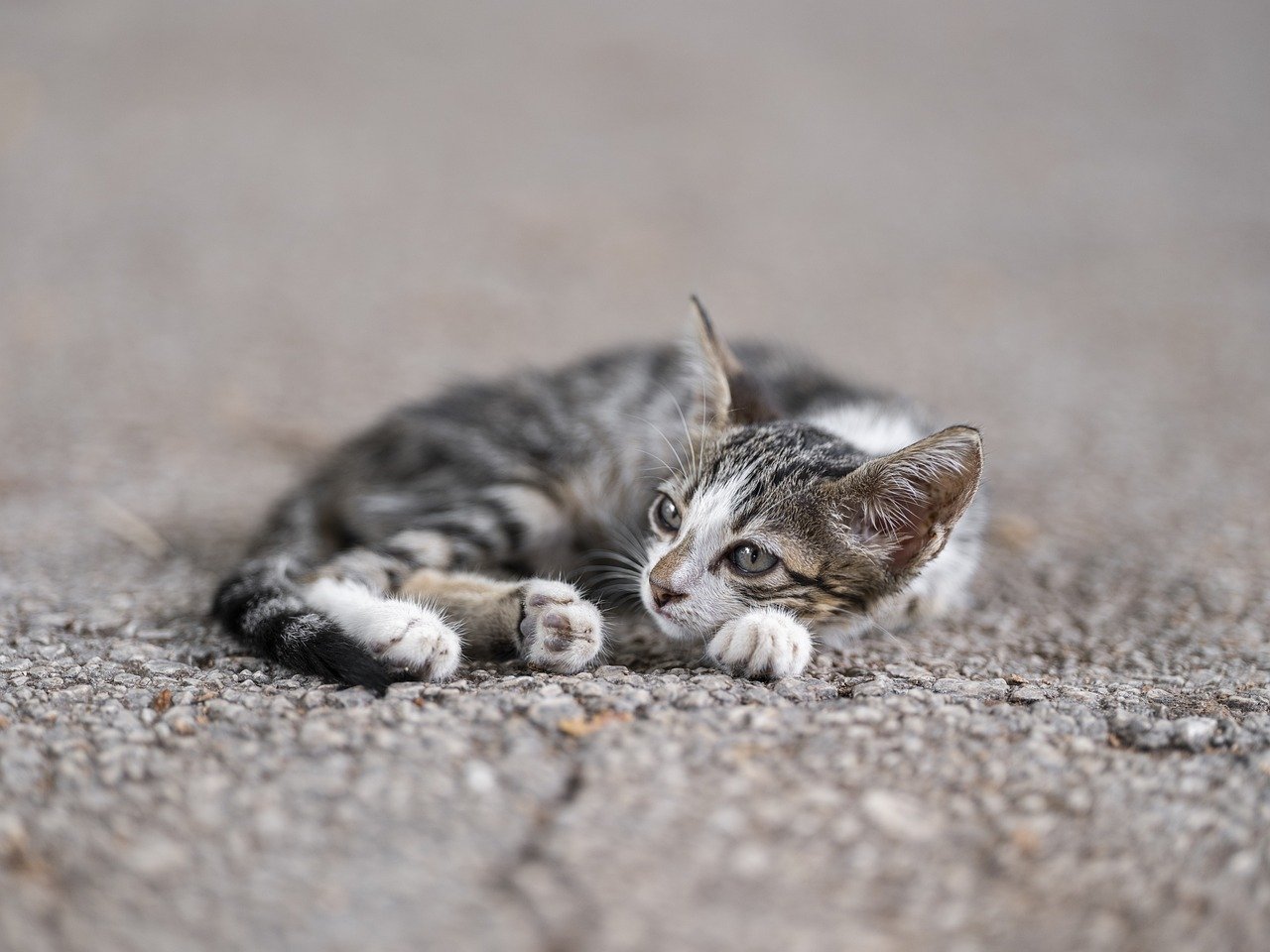
Social Needs
The Norwegian Forest Cat is not just a pretty face with a luxurious coat; they are social creatures that thrive on interaction and companionship. Understanding their social needs is crucial for any potential owner. These cats are known for their friendly and affectionate demeanor, which makes them excellent companions for families and individuals alike. Just like humans, they require social interaction to feel fulfilled and happy. So, if you're considering bringing one of these majestic cats into your home, be prepared for a furry friend that loves to engage with you!
One of the most delightful aspects of the Norwegian Forest Cat's personality is their playfulness. They enjoy engaging in playful activities, whether it's chasing after a feather toy or climbing to new heights in a cat tree. This playful nature is not just a form of entertainment; it also serves as a vital outlet for their energy. Without regular playtime, these cats can become bored, leading to behavioral issues. Think of it like a child who needs to burn off energy—play is essential for their well-being!
In addition to play, Norwegian Forest Cats also require social interaction with their human companions. They are known to form strong bonds with their owners, often following them around the house and seeking out their attention. This breed is not one to shy away from cuddles; in fact, they thrive on affection. Providing them with regular opportunities for bonding—whether through petting, grooming, or simply sitting together—can strengthen your relationship and make them feel secure in their environment.
It's also important to consider their interactions with other pets. Norwegian Forest Cats are generally sociable and can coexist peacefully with other animals, including dogs and other cats. However, it’s essential to introduce new pets gradually, allowing them to get used to each other. A well-planned introduction can lead to a harmonious household where everyone gets along. Think of it like hosting a party; you wouldn’t want to throw everyone together without a little preparation, right?
To ensure your Norwegian Forest Cat remains happy and well-adjusted, consider the following tips:
- Schedule Playtime: Set aside dedicated time each day for interactive play. This not only keeps them entertained but also strengthens your bond.
- Encourage Exploration: Create a stimulating environment with climbing structures and scratching posts. This allows them to express their natural behaviors.
- Socialize Early: If you’re adopting a kitten, early socialization with humans and other animals can help them grow into well-adjusted adults.
In summary, the social needs of the Norwegian Forest Cat are paramount to their happiness. By engaging in regular play, providing affection, and fostering a friendly environment, you can ensure that your furry friend leads a fulfilling life. Remember, these cats are not just pets; they are family members who thrive on love and companionship!
Q: Do Norwegian Forest Cats get along with other pets?
A: Yes, they are generally sociable and can coexist well with other pets, given proper introductions.
Q: How much playtime do they need?
A: Aim for at least 15-30 minutes of interactive play each day to keep them happy and engaged.
Q: Are they affectionate?
A: Absolutely! Norwegian Forest Cats are known for their loving nature and enjoy spending time with their owners.
Q: Can they be left alone for long periods?
A: While they are independent, it's best to avoid leaving them alone for extended periods. They thrive on companionship.
Play and Enrichment
When it comes to the Norwegian Forest Cat, playtime is not just a luxury; it's a necessity! These cats are not only known for their striking looks but also for their lively and curious nature. Imagine a little lion scaling a tree—this is how your Norwegian Forest Cat feels when they engage in play. Their natural instincts as hunters mean that they thrive on activities that stimulate both their body and mind. So, how do you keep your feline friend entertained and enriched?
First off, consider incorporating a variety of toys into your cat's playtime routine. Toys that mimic the movements of prey—like feather wands or laser pointers—can ignite their hunting instincts. Additionally, interactive toys that dispense treats can keep them mentally stimulated while rewarding their efforts. It's like a treasure hunt every time they play!
Moreover, creating a stimulating environment can significantly enhance their play experience. Think about adding climbing structures or cat trees to your home. These not only give your Norwegian Forest Cat a place to explore but also satisfy their natural desire to climb and perch. A well-placed window perch can also provide hours of entertainment as they watch the world go by outside, keeping their minds sharp and engaged.
Don't forget about the importance of social interaction during playtime. Engaging with your cat through games like hide-and-seek or fetch can strengthen your bond and make them feel loved. After all, play is a fantastic way to communicate and connect with your furry companion. Remember, a happy cat is a playful cat, and the more you invest in their playtime, the more joy they will bring into your life.
To help you get started, here are some recommended toys and activities that can enhance your Norwegian Forest Cat's play experience:
- Feather Wands: Great for interactive play and mimicking bird movements.
- Laser Pointers: Perfect for those high-energy chases that keep them on their toes.
- Catnip Toys: These can stimulate their senses and encourage playful behavior.
- Puzzle Feeders: Ideal for mental stimulation and rewarding their efforts.
Lastly, it’s essential to rotate their toys regularly. Just like us, cats can get bored with the same old things. By introducing new toys or rotating existing ones, you can keep their playtime fresh and exciting. Think of it as giving them a new adventure every now and then!
In conclusion, play and enrichment are vital components of a Norwegian Forest Cat's wellbeing. By providing them with a variety of engaging activities and toys, you not only cater to their natural instincts but also foster a loving and happy environment. So, get ready to unleash the fun and watch your furry friend thrive!
- How much playtime does a Norwegian Forest Cat need? Ideally, they should have at least 30 minutes to an hour of playtime each day to stay healthy and happy.
- What are the best toys for Norwegian Forest Cats? Interactive toys like feather wands, laser pointers, and puzzle feeders are excellent choices.
- Can I train my Norwegian Forest Cat to play fetch? Yes! With patience and positive reinforcement, many cats can learn to play fetch.
- How can I tell if my cat is bored? Signs of boredom include excessive sleeping, destructive behavior, and a lack of interest in toys.
Bonding with Your Cat
Building a strong bond with your Norwegian Forest Cat is like nurturing a beautiful friendship; it requires time, patience, and a little understanding of their unique personality. These magnificent creatures are known for their playful and affectionate nature, but they can also be independent, making it crucial for you to approach bonding with care. So, how can you foster this special connection? Let's dive into some effective strategies!
First and foremost, spending quality time together is essential. Just like humans, cats thrive on attention and interaction. Whether it's engaging in a game of chase with a feather wand or simply lounging together on the couch, these moments create lasting memories and strengthen your relationship. Remember, Norwegian Forest Cats are playful by nature, so incorporating playtime into your daily routine can significantly enhance your bond. You might find that they have a penchant for climbing and exploring, so providing them with a cat tree can offer both physical and mental stimulation.
Another vital aspect of bonding is understanding their body language. Cats communicate in subtle ways, and being attuned to their signals can help you respond to their needs better. For instance, if your Norwegian Forest Cat approaches you with a slow blink, it’s their way of saying, "I trust you." In contrast, if they flick their tail or flatten their ears, it may indicate they need some space. By recognizing these cues, you can foster a more trusting environment, allowing your cat to feel safe and secure.
Moreover, positive reinforcement plays a significant role in building trust. Whenever your cat engages in a desired behavior, like using their scratching post instead of your furniture, reward them with a treat or extra affection. This not only encourages good habits but also reinforces the bond you share. Over time, your Norwegian Forest Cat will associate you with positive experiences, making them more likely to seek your company.
Finally, don’t underestimate the power of routine. Cats are creatures of habit, and establishing a consistent daily routine can help your Norwegian Forest Cat feel more secure. Whether it’s feeding them at the same time each day or having a designated playtime, these rituals can create a sense of stability and predictability in their lives, which can lead to a stronger bond between you two.
In summary, bonding with your Norwegian Forest Cat is a rewarding journey that involves patience, understanding, and a bit of fun. By spending quality time together, recognizing their body language, using positive reinforcement, and establishing routines, you can nurture a deep and lasting relationship with your feline friend. After all, at the end of the day, isn’t that what we all want—a loving companion who feels like family?
- How long does it take to bond with a Norwegian Forest Cat?
The time it takes to bond can vary from cat to cat. Some may warm up quickly, while others might take weeks or even months. Be patient and consistent in your efforts.
- What are some signs that my cat is bonding with me?
Signs include following you around, purring when near you, slow blinking, and initiating play. These behaviors indicate trust and affection.
- Can I bond with my cat through grooming?
Absolutely! Many cats enjoy being groomed, and it can be a great way to bond. Just be sure to use gentle strokes and pay attention to their comfort level.
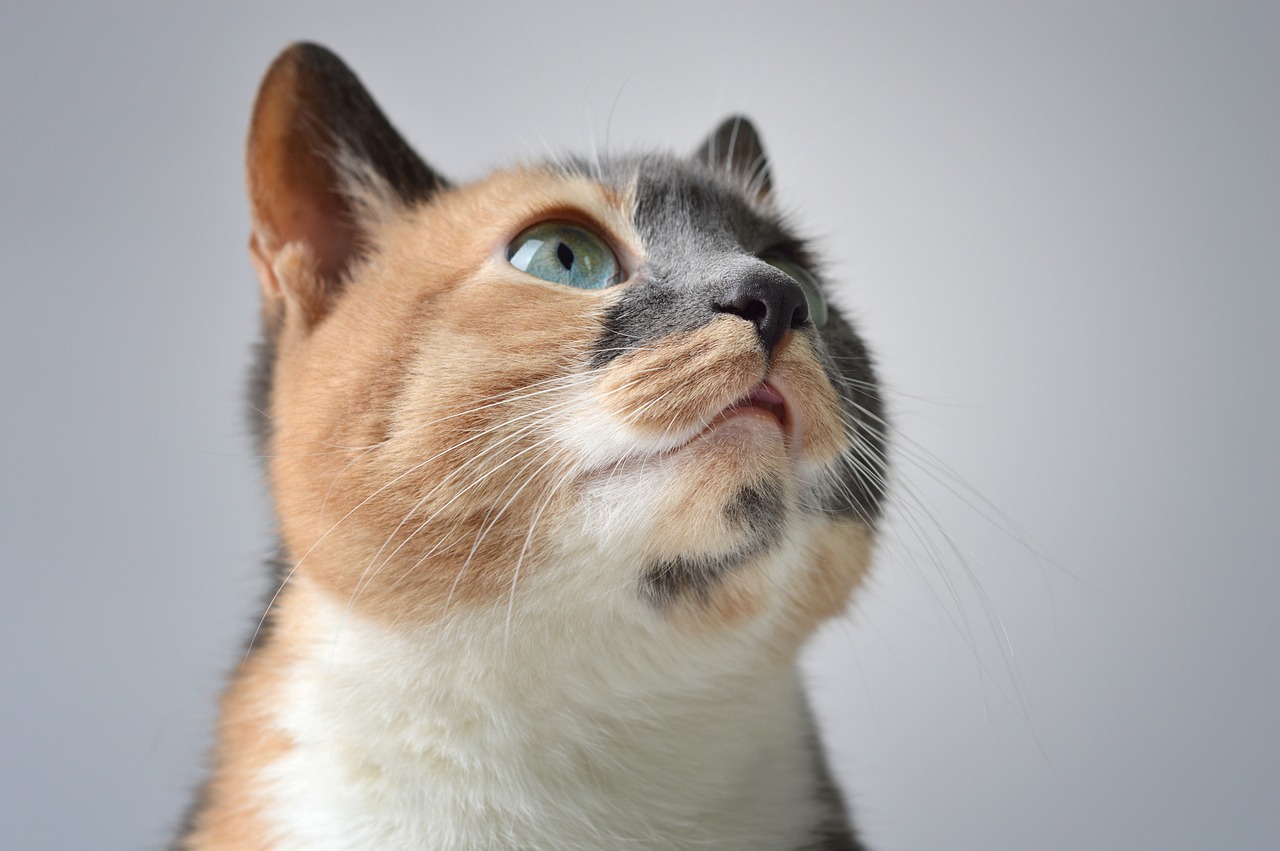
Health Considerations
When it comes to the Norwegian Forest Cat, understanding their health considerations is crucial for any potential owner. These majestic felines are generally robust and hardy, but like all breeds, they can be susceptible to certain health issues. One of the most notable concerns is hypertrophic cardiomyopathy (HCM), a common heart condition that affects many cat breeds. Regular veterinary check-ups and early detection are essential in managing this condition effectively.
Another health issue to watch for is hip dysplasia, which can lead to joint pain and mobility issues. This condition is more prevalent in larger breeds, and Norwegian Forest Cats, with their sturdy build, are not exempt. Maintaining a healthy weight through a balanced diet and regular exercise can significantly reduce the risk of developing hip dysplasia.
Furthermore, these cats can also experience gingivitis and other dental problems due to their unique dental structure. Regular dental care, including brushing their teeth and providing dental treats, can help maintain their oral health. It's important to note that Norwegian Forest Cats are known for their strong immune systems, but they can still be affected by common feline viruses, so ensuring they are up-to-date on vaccinations is vital.
To give you a clearer picture of the health considerations for Norwegian Forest Cats, here's a table summarizing the common health issues and preventive measures:
| Health Issue | Description | Preventive Measures |
|---|---|---|
| Hypertrophic Cardiomyopathy (HCM) | A heart condition that can lead to heart failure. | Regular veterinary check-ups and heart screenings. |
| Hip Dysplasia | A genetic condition affecting the hip joint, causing pain and mobility issues. | Weight management and regular exercise. |
| Gingivitis | Inflammation of the gums that can lead to dental problems. | Regular dental care and vet check-ups. |
| Feline Viruses | Common viral infections that can affect cats. | Keep vaccinations up-to-date. |
In addition to these health considerations, it's essential to provide a nutritionally balanced diet tailored to the needs of your Norwegian Forest Cat. High-quality cat food that meets their dietary requirements will keep them healthy and support their overall well-being. Moreover, keeping an eye on their weight is crucial, as obesity can lead to several health problems.
Lastly, don't forget the importance of mental and physical stimulation. Engaging your Norwegian Forest Cat in play and providing them with a stimulating environment can help reduce stress and anxiety, which in turn contributes to their overall health. Remember, a happy cat is often a healthy cat!
- What is the lifespan of a Norwegian Forest Cat?
The average lifespan is around 12 to 16 years, but with proper care, they can live longer. - Are Norwegian Forest Cats prone to any genetic diseases?
Yes, they can be predisposed to conditions like HCM and hip dysplasia. - How often should I take my Norwegian Forest Cat to the vet?
Regular check-ups at least once a year are recommended to monitor their health. - Can Norwegian Forest Cats live indoors?
Yes, they can thrive indoors, but they need plenty of playtime and mental stimulation.
Frequently Asked Questions
- What is the personality of a Norwegian Forest Cat like?
Norwegian Forest Cats are known for their playful and affectionate nature. They are intelligent and social, often forming strong bonds with their families. These cats enjoy interactive play and can be quite curious, making them delightful companions for individuals and families alike.
- How much grooming do Norwegian Forest Cats require?
These cats have a thick, luxurious coat that requires regular grooming to prevent matting. It's recommended to brush them at least once a week, and more frequently during shedding seasons in spring and fall. Regular grooming not only keeps their coat healthy but also strengthens the bond between you and your cat.
- Are Norwegian Forest Cats good with children and other pets?
Absolutely! Norwegian Forest Cats are generally friendly and adaptable, making them great companions for children and other pets. They often enjoy the company of other animals and thrive in a social environment, but it's important to introduce them slowly to ensure everyone gets along.
- What are the common health issues associated with Norwegian Forest Cats?
Like any breed, Norwegian Forest Cats can be prone to certain health issues. Some common concerns include hypertrophic cardiomyopathy and hip dysplasia. Regular veterinary check-ups and a healthy diet can help mitigate these risks and ensure your cat stays healthy and happy.
- How can I bond with my Norwegian Forest Cat?
Bonding with your Norwegian Forest Cat can be a rewarding experience! Spend time playing with them using interactive toys, and engage in gentle petting sessions. Understanding their unique personality and providing them with mental stimulation will help strengthen your relationship.
- Do Norwegian Forest Cats need a lot of exercise?
While they enjoy playtime, Norwegian Forest Cats are relatively low-maintenance in terms of exercise. They benefit from regular play sessions to keep them active and mentally stimulated. Providing climbing structures and toys can help satisfy their natural instincts.
- How often should I bathe my Norwegian Forest Cat?
Generally, Norwegian Forest Cats do not require frequent bathing. Their coat is designed to repel dirt and water. Bathing should only be done when necessary, perhaps every few months, to maintain their coat's health without stripping natural oils.



